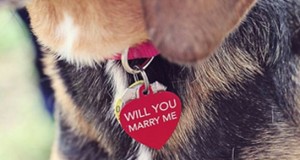 Ferrets seem so “mainstream” these days that it’s easy to forget their unusual natural and “unnatural” history. Please read on…
Ferrets seem so “mainstream” these days that it’s easy to forget their unusual natural and “unnatural” history. Please read on…
Classification: Just What Exactly is a Ferret?
The domestic ferret is classified in the order Carnivora, family Mustelidae, along with 75+ species of weasels, otters, skunks, badgers, wolverines and related animals.
Ranging in size from the least weasel (which, at 2.5 ounces in weight, is the world’s smallest carnivore) to the 7-foot-long, 100 pound Giant Otter, the family Mustelidae includes familiar animals such as skunks and sea otters as well as the little-studied Chinese Ferret-Badgers and tayras.
Subspecies to Species
Originally classified as a subspecies of the European polecat (M. putorius), the domestic ferret was at first given the scientific name Mustela putorius furo. However, it is now considered it to be a separate species, Mustela furo.
The domestic ferret did not originally exist as a distinct species, but rather arose over thousands of years via the selective captive breeding of its wild relative, the European polecat, Mustela putorius.
Ferret Origins: the Domestication of the European Polecat
 The European polecat is the main ancestor of today’s domestic ferret. The Steppe Polecat (Mustela eversmanni), may have played a role in its evolution as a species as well. The domestic ferret can interbreed with both European and steppe polecats, and the resulting offspring are fertile.
The European polecat is the main ancestor of today’s domestic ferret. The Steppe Polecat (Mustela eversmanni), may have played a role in its evolution as a species as well. The domestic ferret can interbreed with both European and steppe polecats, and the resulting offspring are fertile.
Early History: Ancient Greece to the 1700’s
Egypt is usually given in the literature as the site of the domestication of the ferret, but this is likely in error. Most early accounts of domestic ferrets, circa the 3rd century BC, are from Egypt, which may explain the mix-up. Ferrets probably began their journey to domestication as European polecats taken into captivity by the Greeks or Phoenicians. They were subsequently brought to Egypt, where they were much esteemed as rodent-catchers. Roman soldiers also employed ferrets to hunt rabbits.
Domestic ferrets are mentioned in ancient Greek plays and Roman documents. As early as 63 BC, they were being used to help control rabbit plagues on the Balearic Islands. Ferrets reached Germany by 1200, and Genghis Khan apparently hunted with them circa 1221.
In England, “court ferreters” were established by 1223, and animal’s popularity as a rabbit and rodent hunter grew throughout the Middle-Ages. By the 1700’s, ferrets were being used on ships for rat control, and they were named official mascots of the Massachusetts Colonial Navy in honor of such service.
Hunting with Ferrets in the USA
Domestic ferrets were first imported into USA in 1700’s. They were often kept in warehouses and barns to deter rodents, and were sometimes paired with terriers while hunting. “Ferreting”, promoted by the US Department of Agriculture, remained popular for nearly 200 years, but declined with the advent of chemical rodenticides.
New Roles in Industry, Laboratories and the Pet Trade
Ferrets, marketed as “fitch”, have been raised on fur farms in Europe for centuries. Fortunately, efforts to establish the industry in USA failed in the early 1900’s.
In recent times, harnessed ferrets have been used to position wires and cables in narrow, tunnel-like locations. Thus employed, they gained favor in the oil, telephone and airline repair industries, but have now largely been replaced by mechanical runners.
Ferrets were first used in biomedical research to study human influenza virus, and remain as important laboratory subjects in endocrinology, virology and toxicology.
Pet ferrets may be encountered nearly anywhere in the world, but are especially common in the USA, Japan, South Africa and Europe.
“Ferret Legging” – Fun and Games with Angry Ferrets!
In the “sport” of “ferret legging” we find what is surely the oddest human-ferret interaction yet conceived. Participants wear baggy pants, tied at the bottom, and 2 angry ferrets are placed inside. The ferrets may be “dissuaded” from biting only from outside the pants.
This bizarre activity is practiced only by patrons of pubs in England – long term, regular patrons, one must assume! The ferret legging record of 5 hours and 26 minutes, set in 1983 by a 72 year old Englishman, is not expected to be eclipsed anytime soon!
Mustela putorius image referenced from wikipedia and originally posted by Malene Thyssen
 That Pet Blog That Pet Place Pet Blog
That Pet Blog That Pet Place Pet Blog

